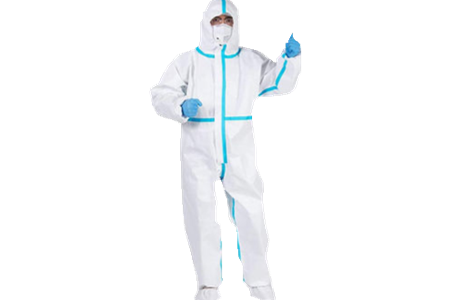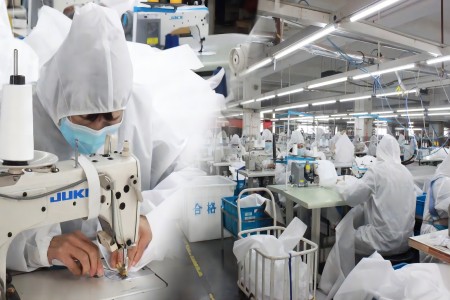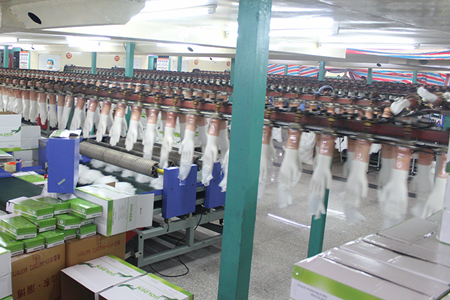2023/9/21

Disposable Protective Coverall Hazmat Suit
In industries ranging from healthcare to hazardous material handling, disposable protective coveralls and disposable hazmat suits are vital for ensuring worker safety and preventing contamination. Whether you are searching for a disposable safety coverall, disposable coverall suit, or a disposable protective coverall hazmat suit, understanding their features, types, and applications is essential for making the right choice. This article provides detailed information to help you select the appropriate disposable protective gear for your needs.
What Are Disposable Protective Coveralls?
Disposable protective coveralls are single-use, full-body garments designed to protect individuals from exposure to harmful substances such as chemicals, biological agents, dust, and infectious materials. These suits typically cover the entire body — including arms, legs, torso, and sometimes the head — and are made from lightweight, breathable materials that offer barrier protection without compromising comfort.
Key Types of Disposable Coveralls
1. Disposable Safety Coveralls
These coveralls provide basic protection against dust, dirt, and minor chemical splashes. Frequently used in construction, maintenance, and manufacturing, they protect workers from general workplace hazards.
2. Disposable Coverall Suit
This is a general term for any one-piece disposable garment designed for body protection. This category includes everything from simple dust coveralls to reinforced chemical-resistant suits.
3. Disposable Coverall Protective Suit
These suits offer enhanced protection features such as sealed seams, hoods, and elastic cuffs. They are designed to guard against hazardous chemicals, biological contaminants, and fine particulate matter, making them suitable for medical, laboratory, and industrial environments.
4. Disposable Hazmat Suit
Disposable hazmat suits are specialized coveralls that provide the highest level of protection against hazardous materials, including toxic chemicals, infectious agents, and radioactive substances. These suits often feature airtight designs, reinforced materials, and meet strict safety standards required for hazardous material (hazmat) handling.
5. Disposable Protective Coverall Hazmat Suit
This term specifically refers to disposable suits designed for hazardous materials work, combining the benefits of disposable coveralls with the stringent protective requirements of hazmat gear.
Features of Disposable Protective Coveralls and Hazmat Suits
Material: Commonly made from polypropylene, polyethylene, SMS (spunbond-meltblown-spunbond), or Tyvek, offering various levels of chemical and particulate resistance.
Design: Full-body coverage including hood, elastic wrists, ankles, and zipper closures to minimize exposure risks.
Breathability: Engineered to allow airflow while maintaining protective barriers.
Single-use: Designed to be disposed of after a single use to prevent contamination transfer.
Compliance: Many meet industry safety standards such as OSHA, ANSI, EN ISO, or NFPA for hazardous materials.
Benefits of Using Disposable Protective Coveralls and Hazmat Suits
Enhanced Safety: Protects wearers from exposure to harmful chemicals, biological agents, and particulates.
Contamination Control: Single-use design prevents cross-contamination in sensitive environments.
Cost Efficiency: Eliminates laundering and maintenance costs associated with reusable suits.
Convenience: Easy to don and dispose of, ideal for short-term or emergency use.
Versatility: Suitable for healthcare, chemical processing, electronics manufacturing, construction, and emergency response.
Applications of Disposable Coveralls and Hazmat Suits
Healthcare: Protection against viruses, bacteria, and other infectious agents during medical procedures and outbreaks.
Chemical Industry: Shield workers from hazardous substances during handling, cleaning, or spill response.
Manufacturing & Construction: Guard against dust, paint, and particulate matter.
Hazardous Material Handling: Essential for emergency responders and cleanup crews dealing with toxic or radioactive materials.
Laboratories: Maintain sterile environments and protect personnel from chemical or biological exposure.
How to Choose the Right Disposable Coverall or Hazmat Suit
When selecting disposable protective clothing, consider:
Hazard Type: Identify chemical, biological, or particulate risks to determine the required protection level.
Material Suitability: Choose materials designed to resist specific hazards (e.g., chemical-resistant or breathable fabrics).
Fit and Comfort: Ensure ergonomic design that allows freedom of movement and proper fit to avoid gaps.
Protective Features: Look for hoods, sealed seams, zipper covers, and elastic cuffs.
Regulatory Compliance: Verify certification based on your industry’s safety standards.
Conclusion
Whether you need a disposable protective coverall, disposable safety coverall, disposable coverall suit, disposable hazmat suit, disposable coverall protective suit, or a disposable protective coverall hazmat suit, choosing the right disposable protective garment is crucial for safety and operational efficiency. These suits provide essential protection against a wide range of hazards, helping to safeguard workers and maintain contamination control in various environments.
Investing in the right disposable coverall ensures compliance with safety regulations, enhances worker confidence, and reduces the risk of workplace accidents and infections.




 WhatsApp
WhatsApp
Send us your message
You can send an email asking for the price and detailed information of this product. We will reply you as soon as we receive your email